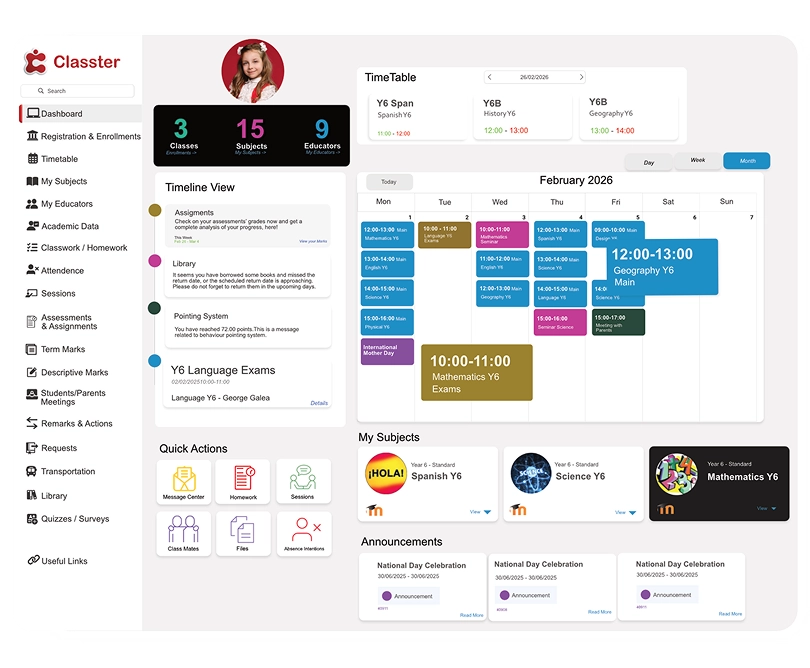Higher education today runs on constant digital interaction. Students move between learning platforms, email, mobile apps, and campus systems every day. These touchpoints shape how they access courses, manage tasks, and get support. These activities happen through multiple platforms, and most of them link back to a single point of access. The student portal.
The student portal is the centre of the digital campus. A well-designed portal reduces support requests, improves data consistency, and helps teams work with a single source of truth. A weak or outdated portal has the opposite effect. It increases manual work, slows communication, and creates barriers that frustrate students and staff.
This article explores why student portals have become essential to the campus experience, how they shape academic success, and what students expect from them today. It also outlines the operational benefits for Higher Education teams, the features that matter most, and the reasons modern institutions are investing in platform upgrades.

Student Portals Matter More Than Ever in Higher Education
Student portals now sit at the centre of the campus experience because they bring every essential task into one accessible space. Students want fast access to information, and a modern portal delivers this by showing schedules, grades, resources, and updates in real time. It replaces scattered systems with a single point of entry, which helps students stay organised and reduces confusion.
A strong portal also supports smoother workflows for both students and staff. It links key systems such as the Student Information System (SIS), the Learning Management System (LMS), and communication tools. This connection gives users a clear path to the information they need without switching between multiple platforms.
Unified communication is another major advantage. The portal becomes the place where students receive alerts, track tasks, and request support. When issues arise, the portal guides them to the right resource quickly. This proactive support makes campus life easier and improves the overall student experience.
How Student Portals Shape Every Stage
A modern student portal supports the full academic journey from the first inquiry to life after graduation. It creates a clear and consistent path that guides students through every major step.
Pre-admissions
Prospective students use the portal to explore programs, submit applications, upload documents, and track their status. This creates a smooth first interaction with the institution.
Enrollment
Once admitted, students receive access to key onboarding tools. They can accept offers, review requirements, complete forms, and prepare for their first semester.
Course registration
The portal connects to the Student Information System (SIS). Students can view available courses, check prerequisites, register, and adjust their schedules with confidence.
Day to day academic life
During the semester, the portal becomes the main hub. It provides access to the Learning Management System (LMS), calendars, resources, grades, and communication tools.
Exams and grading
Students receive exam schedules, assessment instructions, and results in one place. This reduces uncertainty and supports better planning.
Internships, placements and graduate tracking
The portal helps students apply for opportunities, upload required documents, and receive updates from placement offices.
Alumni engagement
After graduation, the portal continues to serve as a link to transcripts, career services, events, and ongoing communication with the institution.
What Students Expect in 2025 and Beyond
Student expectations are shifting rapidly, and higher education must keep pace with the digital habits of a new generation. Research shows that students now view technology as part of their everyday academic experience, not an optional extra. They expect tools that feel simple, fast, and intuitive.
Key expectations include:
- Mobile-first design that works on any device
- Instant updates for schedules, grades, and deadlines
- Self-service options for tasks such as registration, payments, and support requests
- Real-time communication through alerts, messages, and notifications
- Personalization that adapts to each student’s program and progress
- Seamless links between the Student Information System, Learning Management System, and campus services
- Clear pathways to support when issues arise
Essential Features of a Robust Student Portal
A strong student portal should bring key academic and campus tasks into one organised space. The table below outlines the core features and explains why each one matters.
| Feature | Why It Is Important |
| Timetables and calendars | Students can view classes, exams, and deadlines in one place. This helps them plan their time and stay organised. |
| Assignments and submissions | A clear area for tasks and uploads reduces confusion and supports consistent academic workflows. |
| Grades and feedback | Students receive results quickly, which improves transparency and helps them track their progress. |
| Communication hub | Centralised messages and updates improve coordination between students, faculty, and support teams. |
| Notifications and alerts | Real-time updates keep students informed about schedule changes, deadlines, and important announcements. |
| Finance and billing overview | Students can view fees, payments, and balances, which reduces support requests and improves financial clarity. |
| Attendance tracking | Easy access to attendance records supports accountability and helps students monitor their participation. |
| LMS and SIS integrations | Links to the Learning Management System (LMS) and Student Information System (SIS) create a seamless experience with one point of access. |
| Mobile app access | Students can manage tasks from any device, which matches modern study habits and supports flexible learning. |
Classter’s Unified Student Portal Enhances the Campus Experience
Classter provides a clear example of how a unified student portal can support the modern digital campus. It gives every user one login and one source of truth, which removes confusion and reduces duplicate data. Role-based dashboards guide students, educators, parents, agents, and staff to the information that matters most to them. This makes daily tasks faster and more predictable.
Classter also connects the Student Information System (SIS), the Learning Management System (LMS), and School Management Software (SMS) into one environment. This creates a smooth flow of academic, administrative, and communication data. Its secure cloud architecture protects sensitive records while keeping the system scalable and reliable for institutions of any size.
To see how a unified portal can support your campus, you can book a demo and explore the experience from a student’s point of view.
FAQ’s
Student portals support daily academic tasks by offering real-time information, clear communication, and self-service features. They reduce confusion, improve support, and help students stay organised across blended and digital learning environments.
A strong portal helps students track deadlines, manage assignments, review grades, and receive timely updates. These tools support better planning and help students stay engaged throughout the semester.
Classter brings SIS, LMS, and SMS data into one platform. This gives students one login and one source of truth, which reduces confusion and increases accuracy across academic and administrative tasks.

